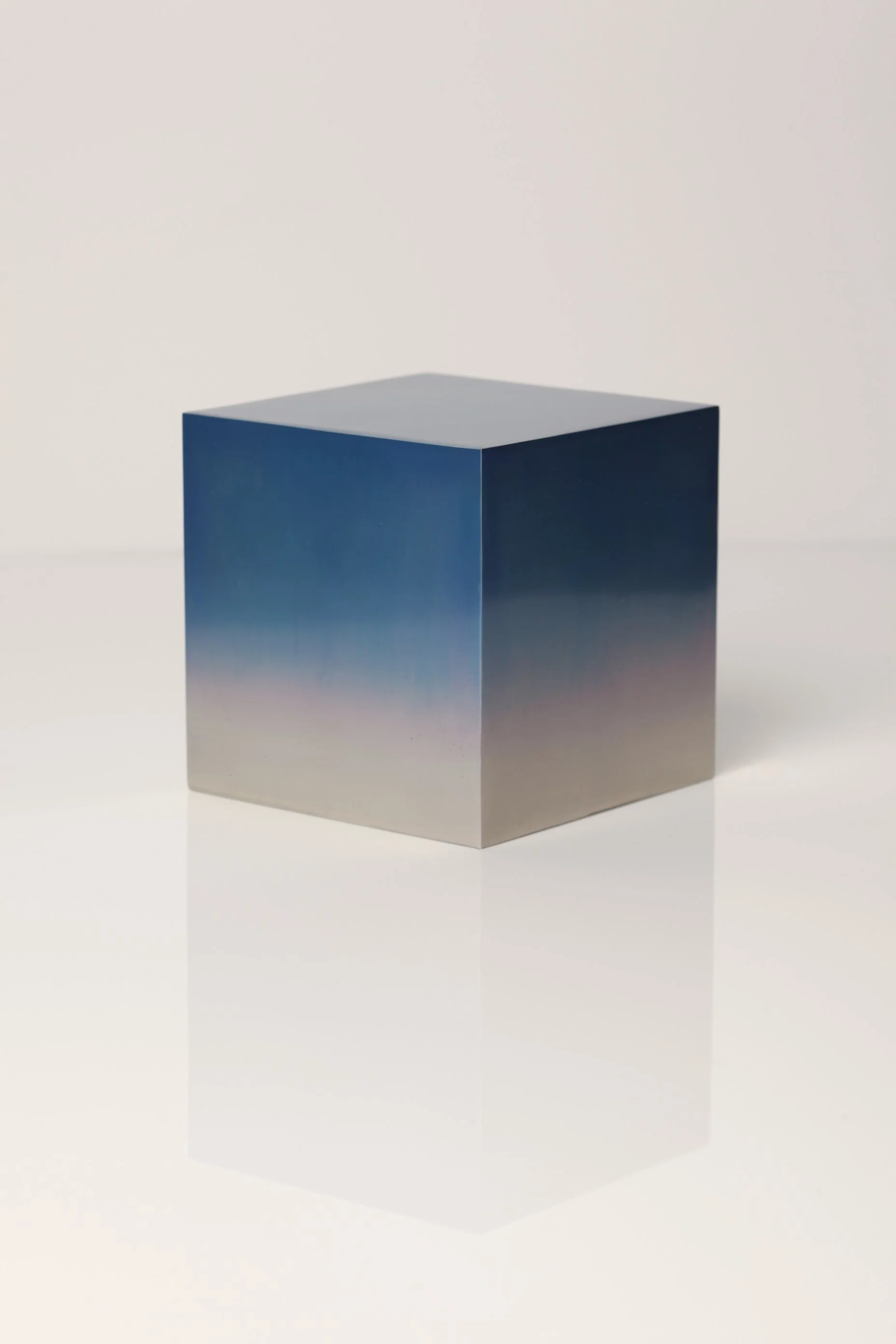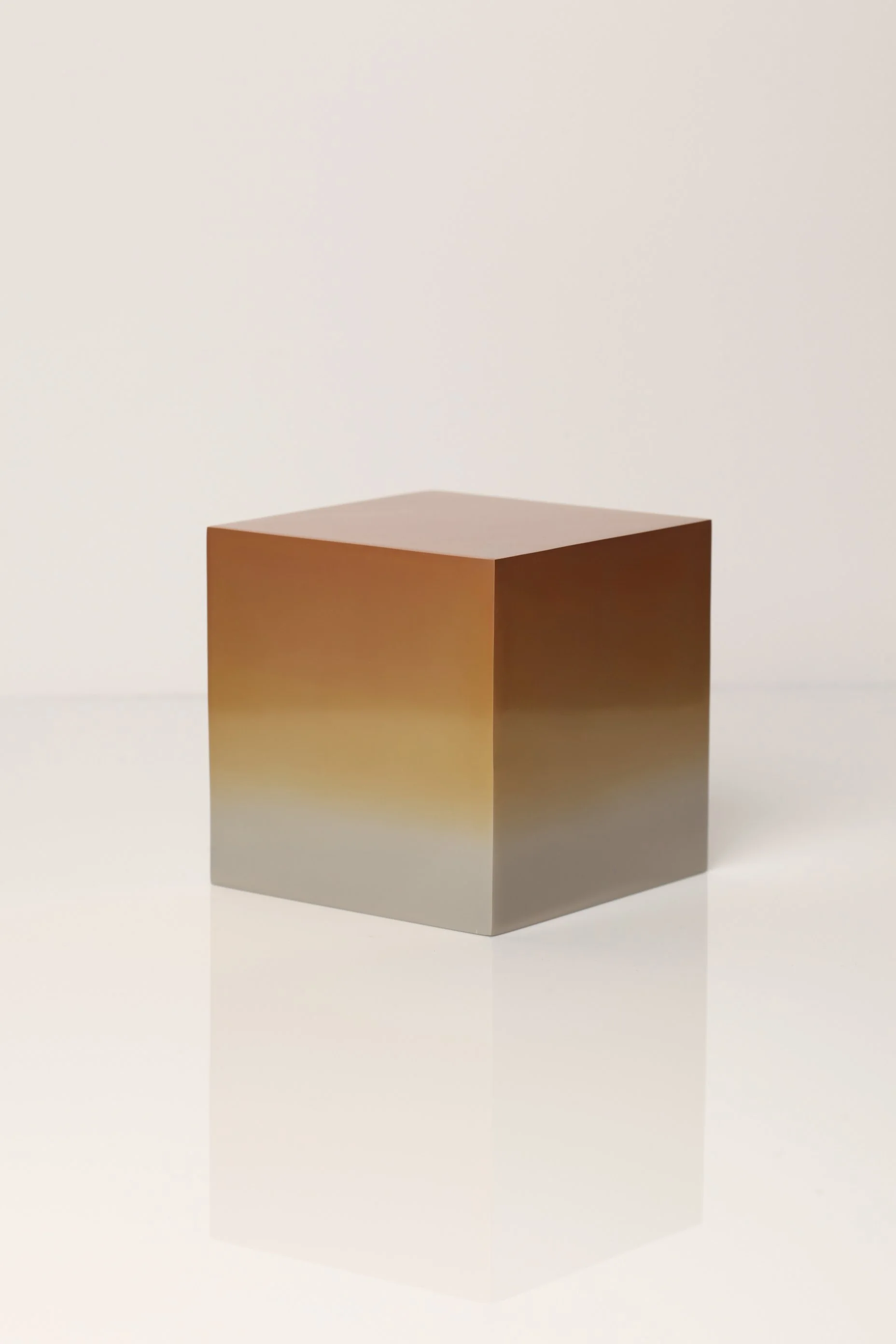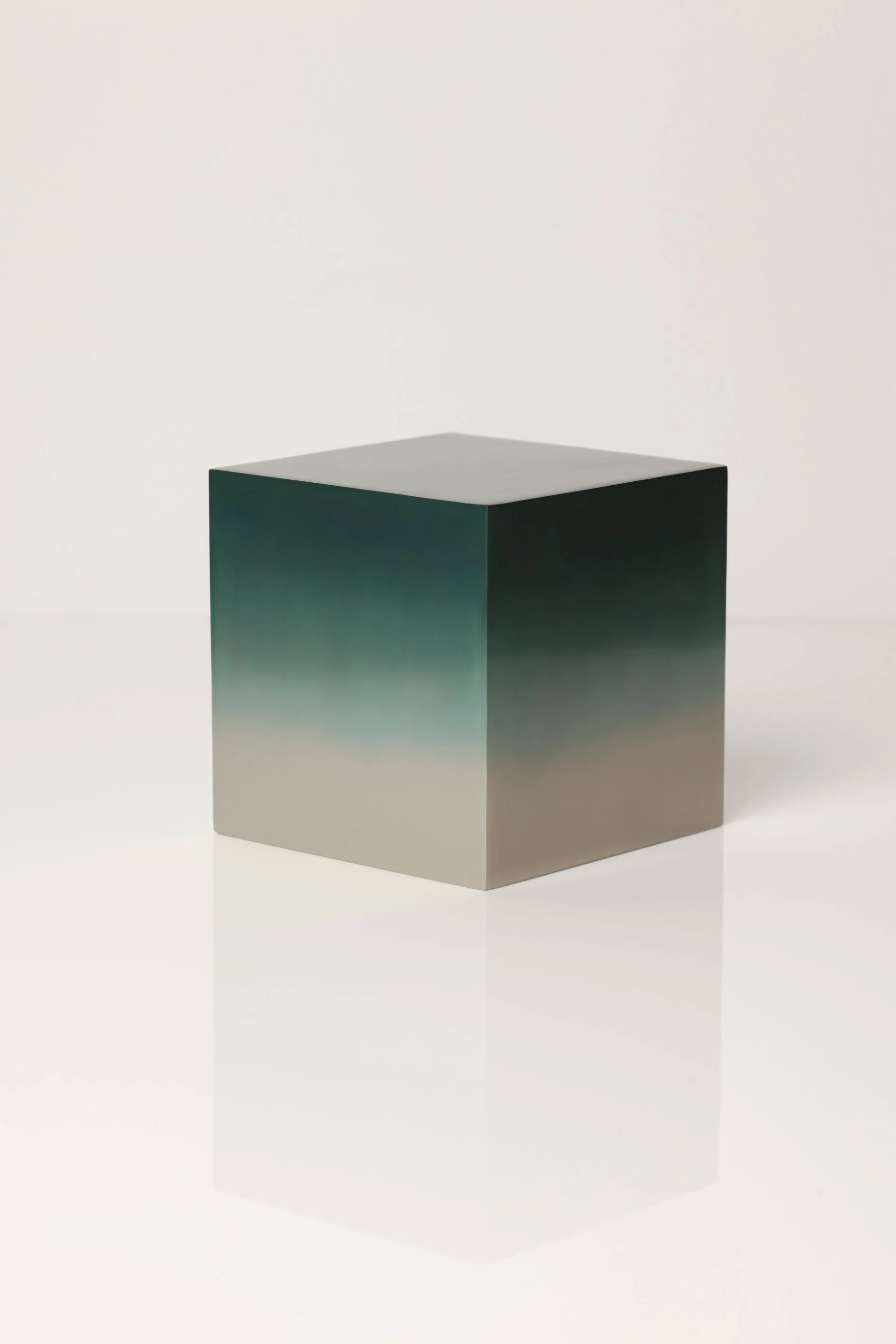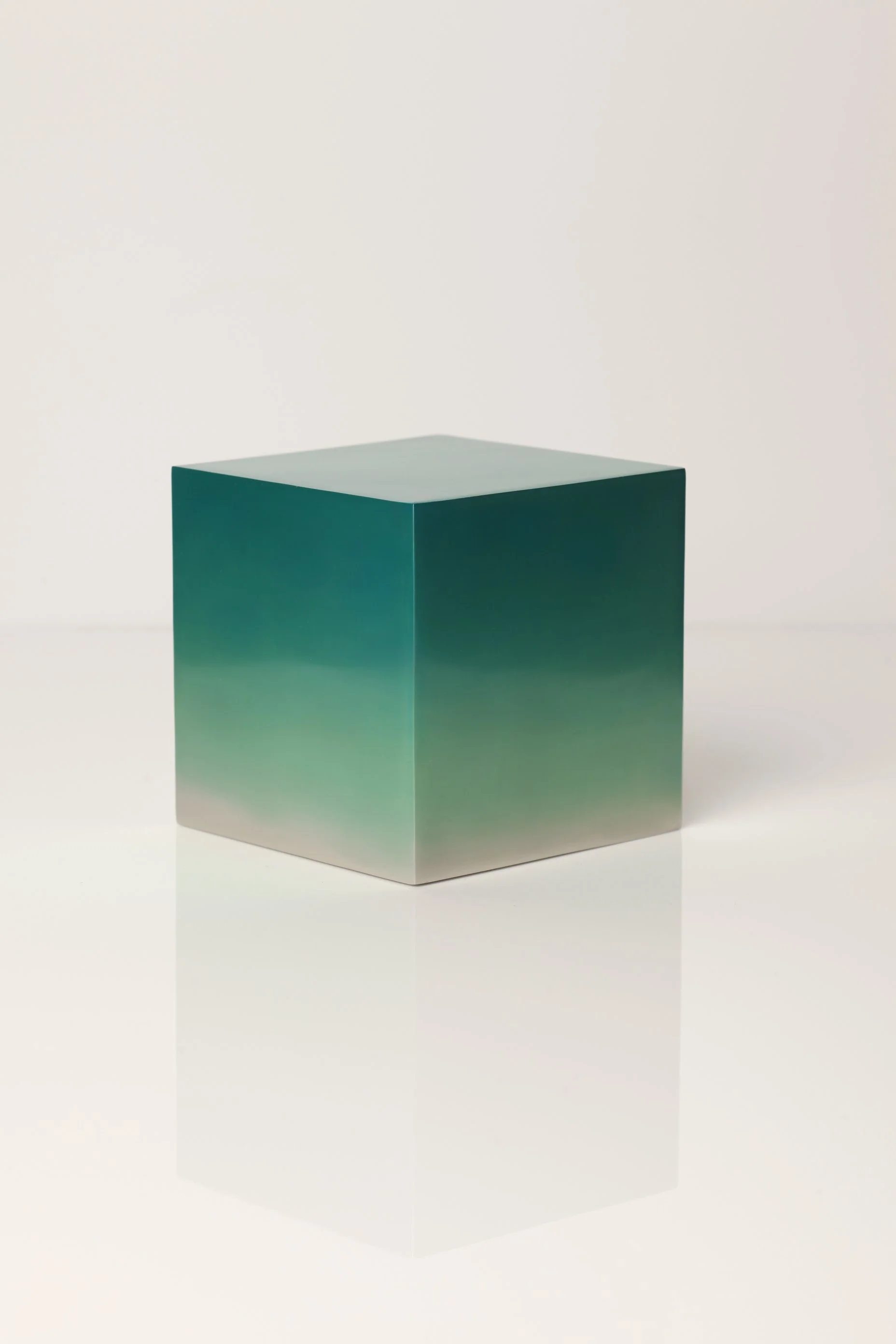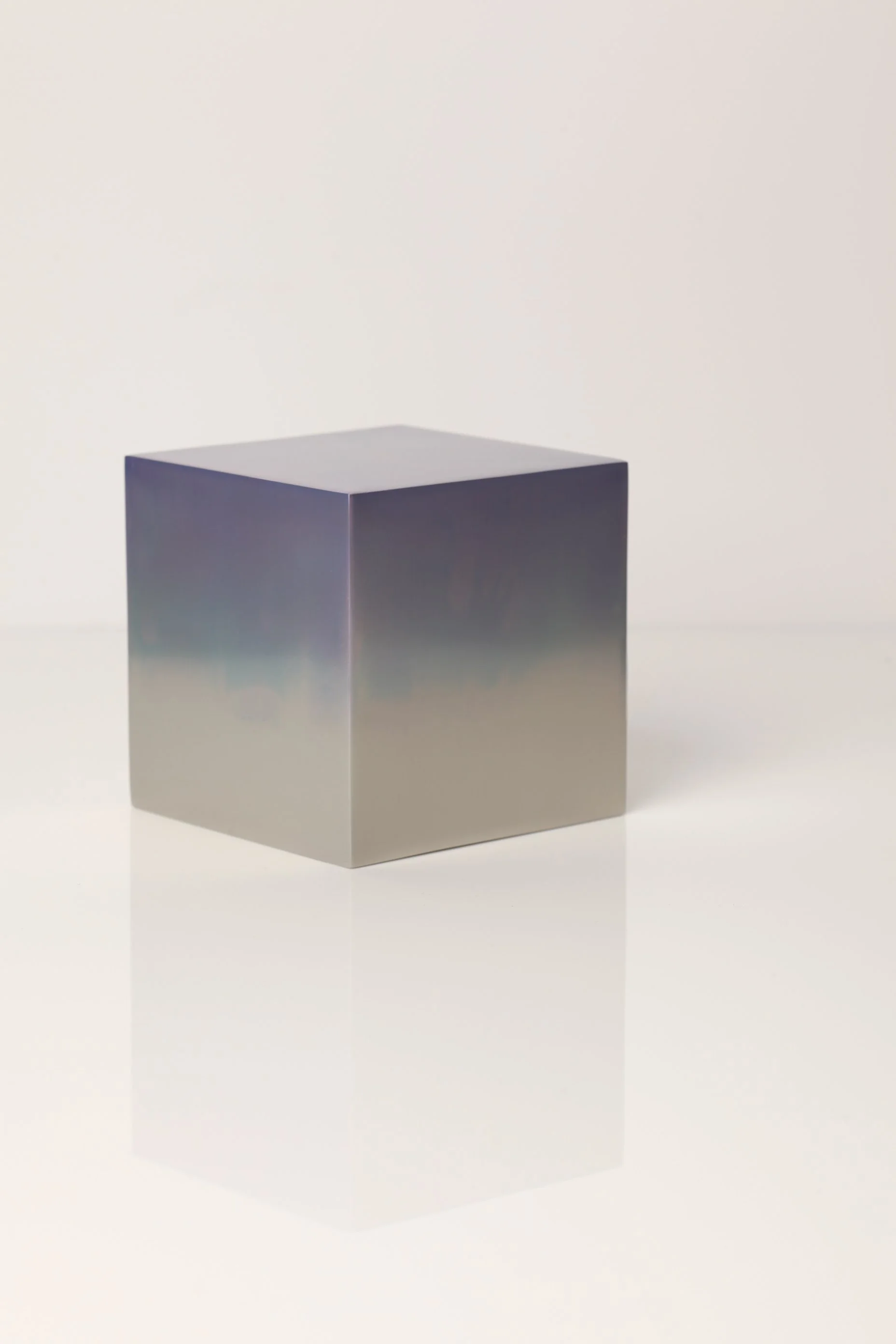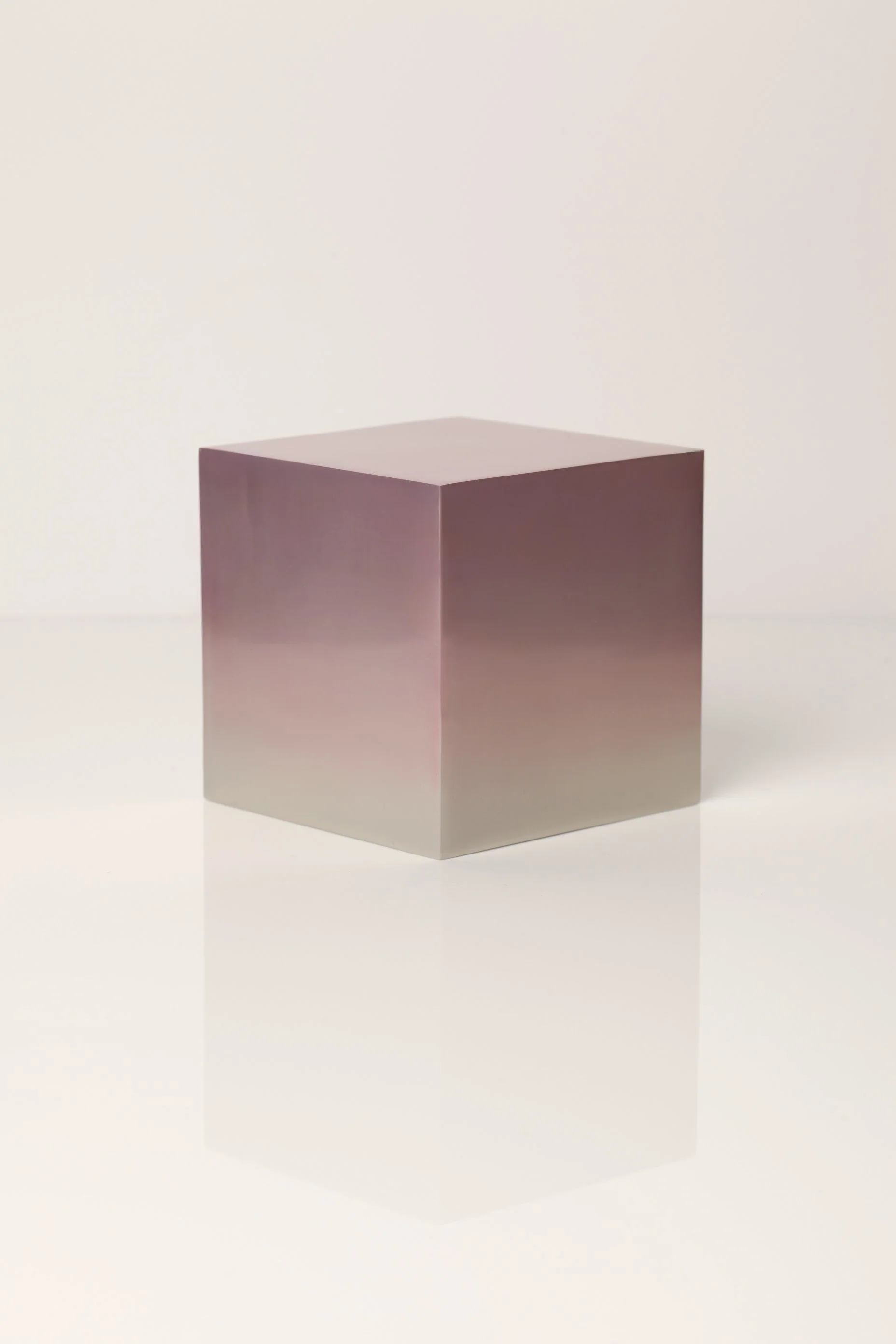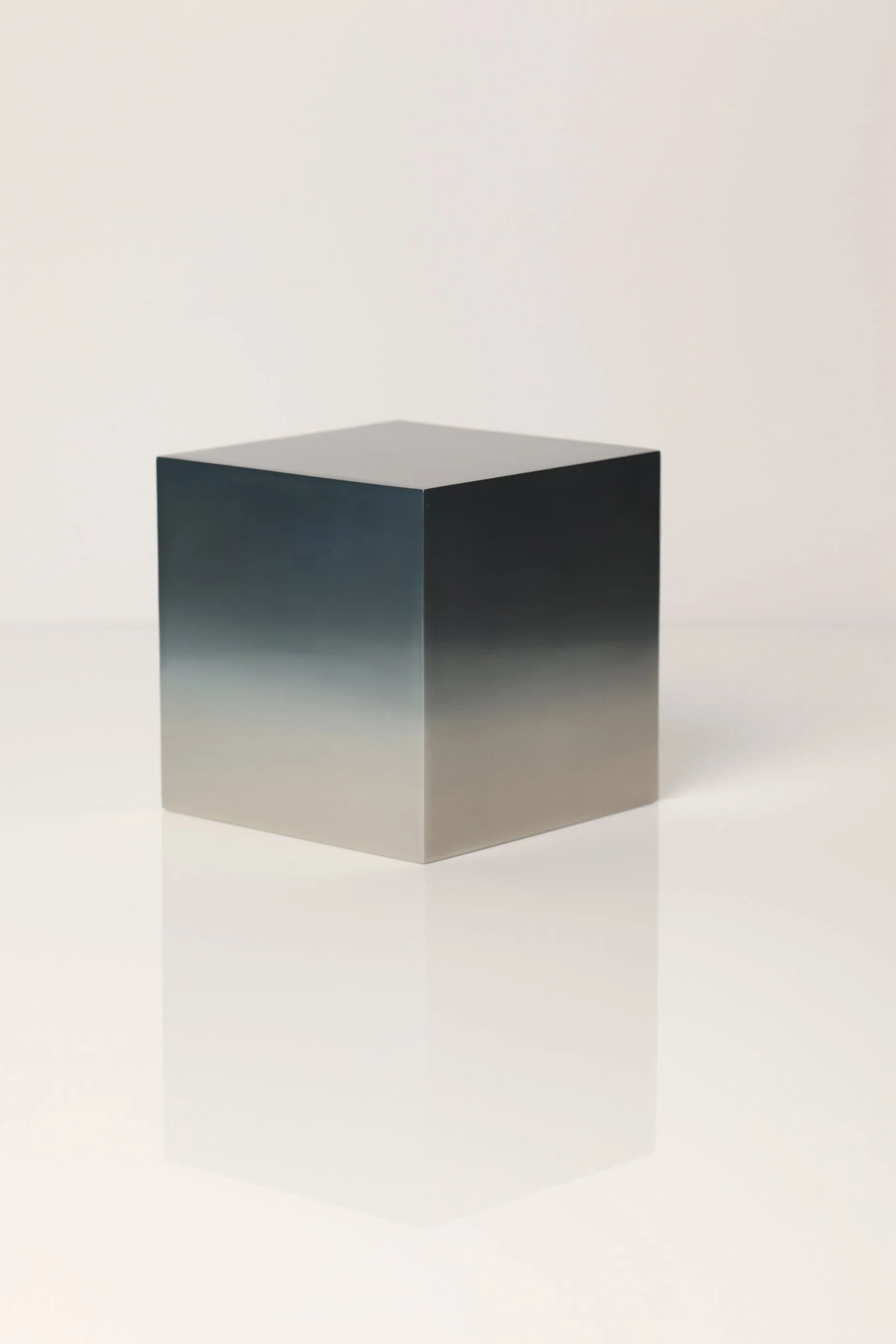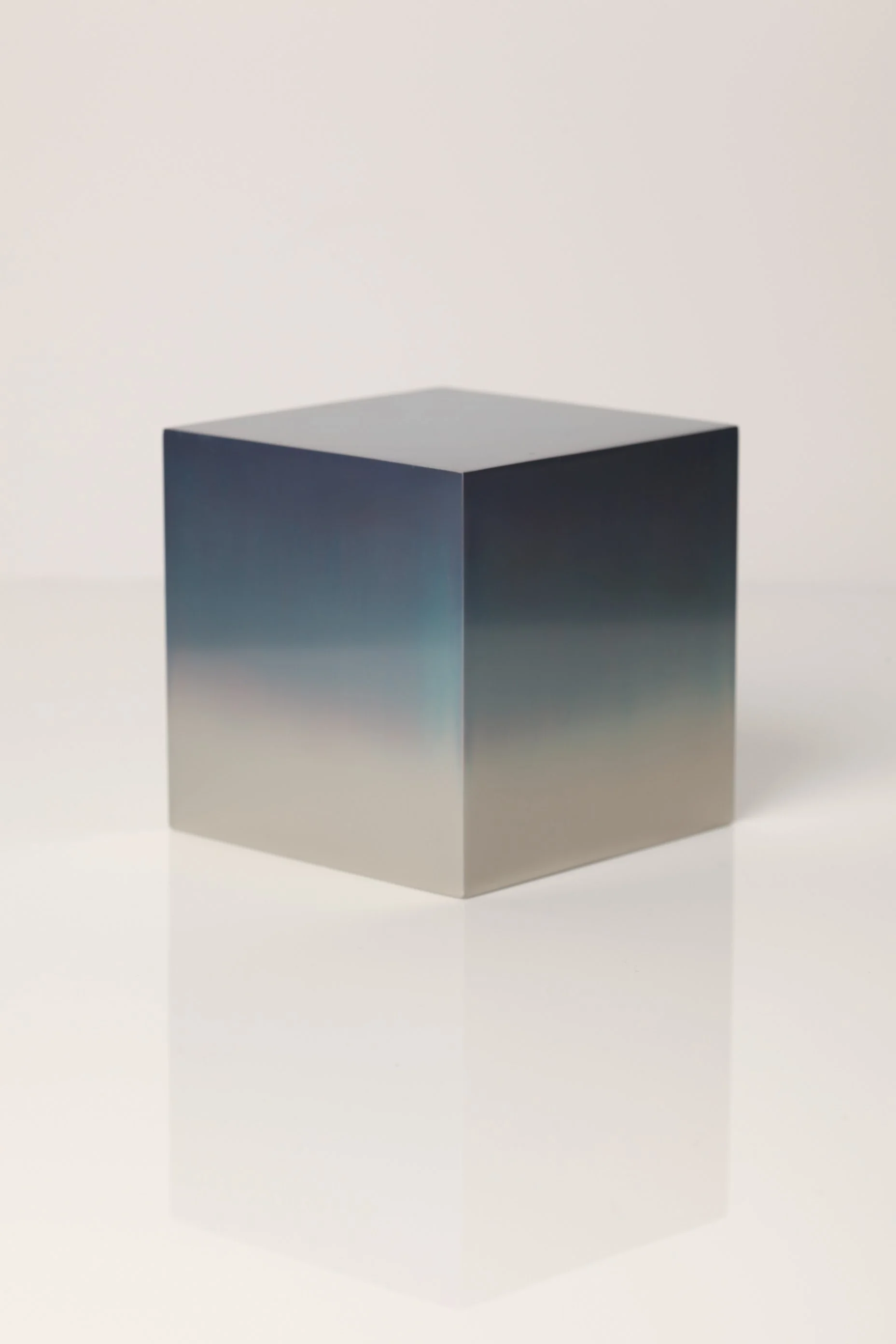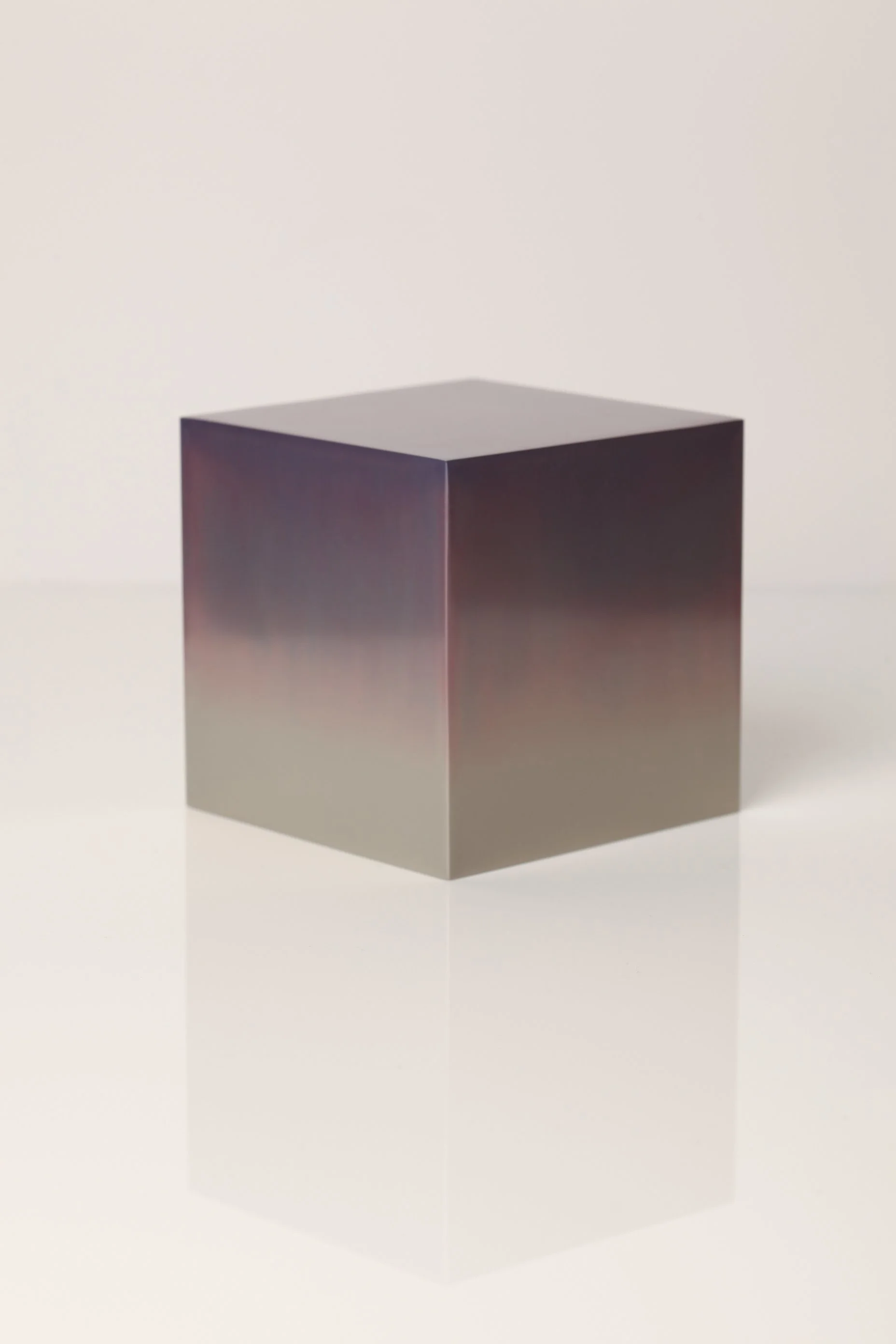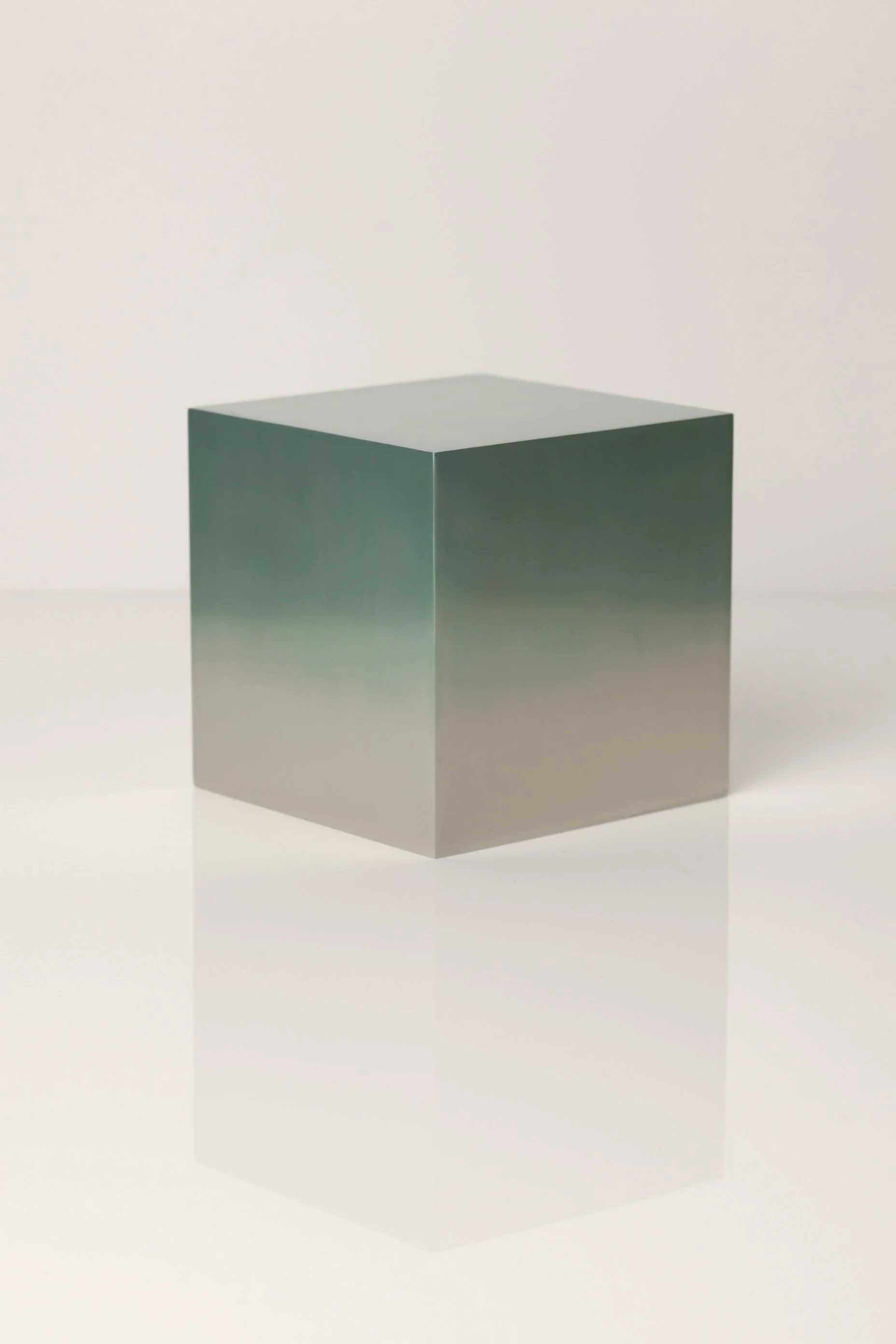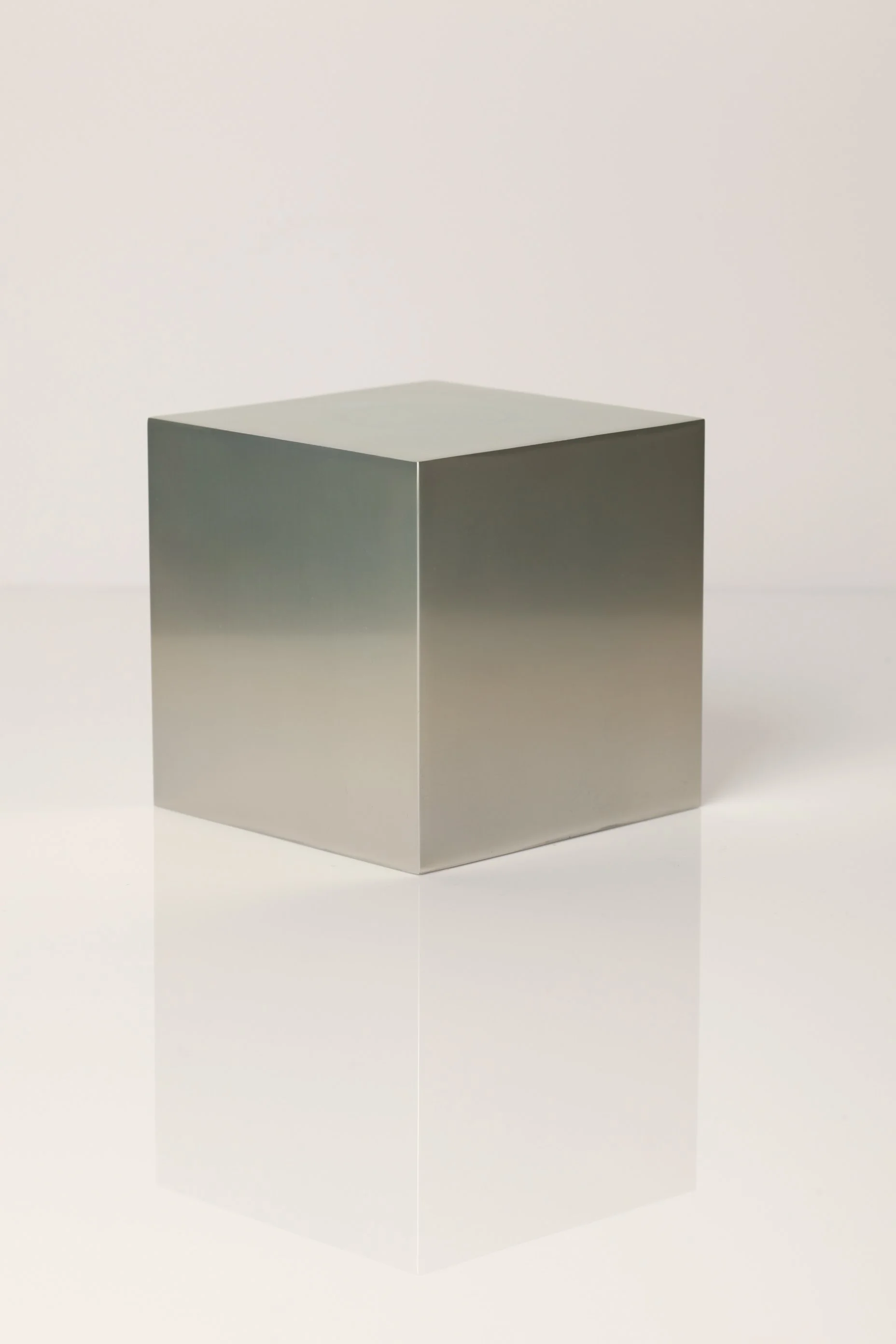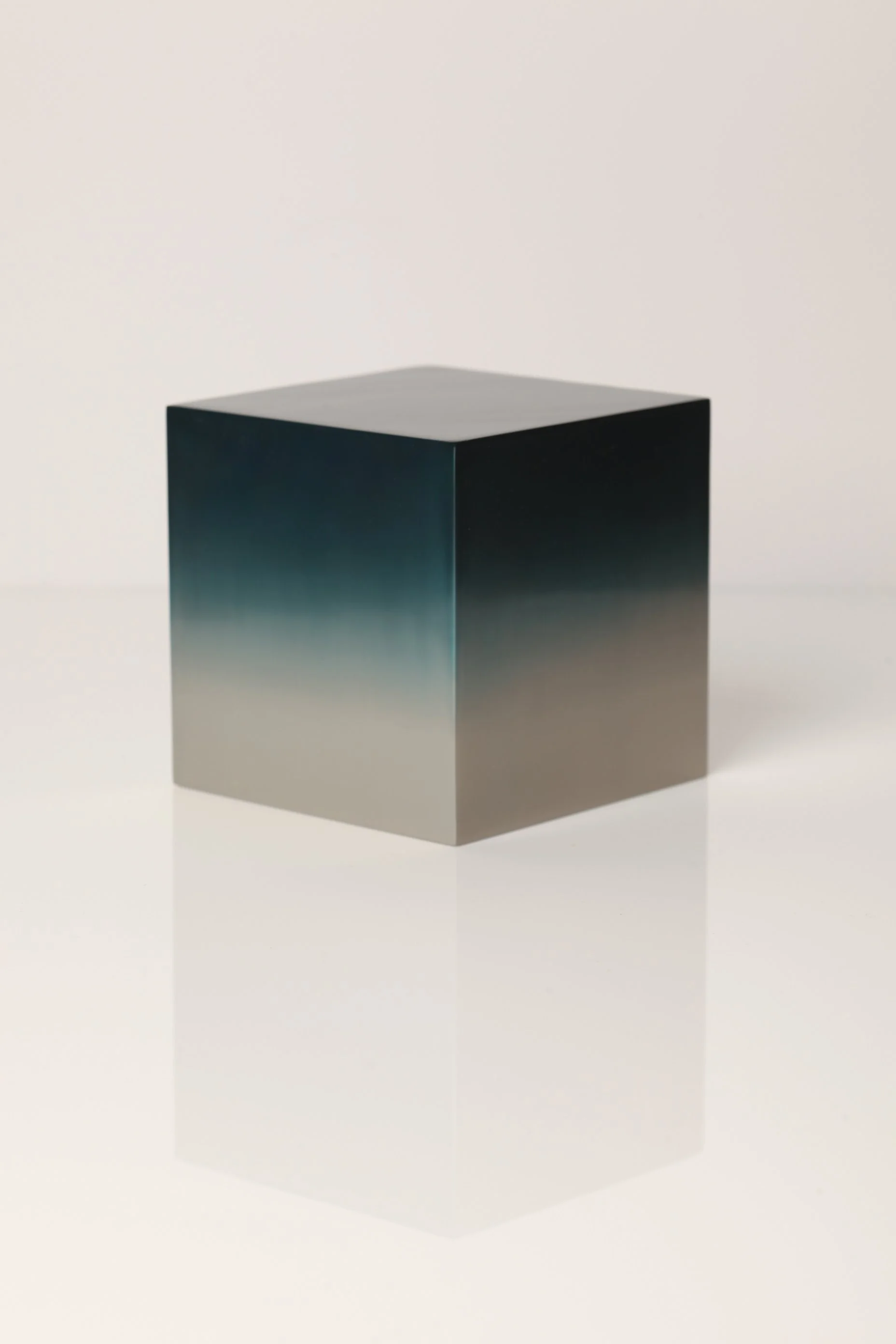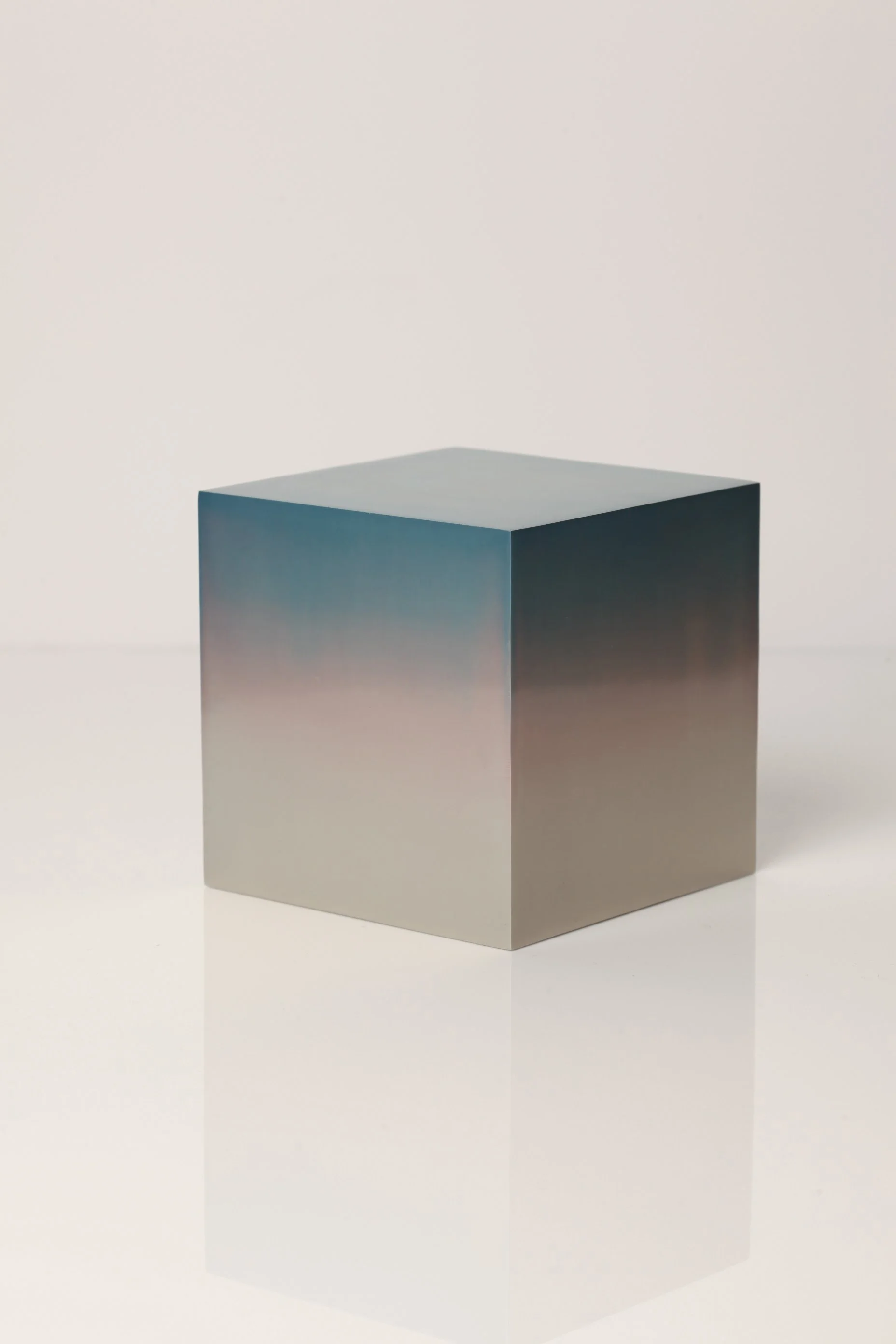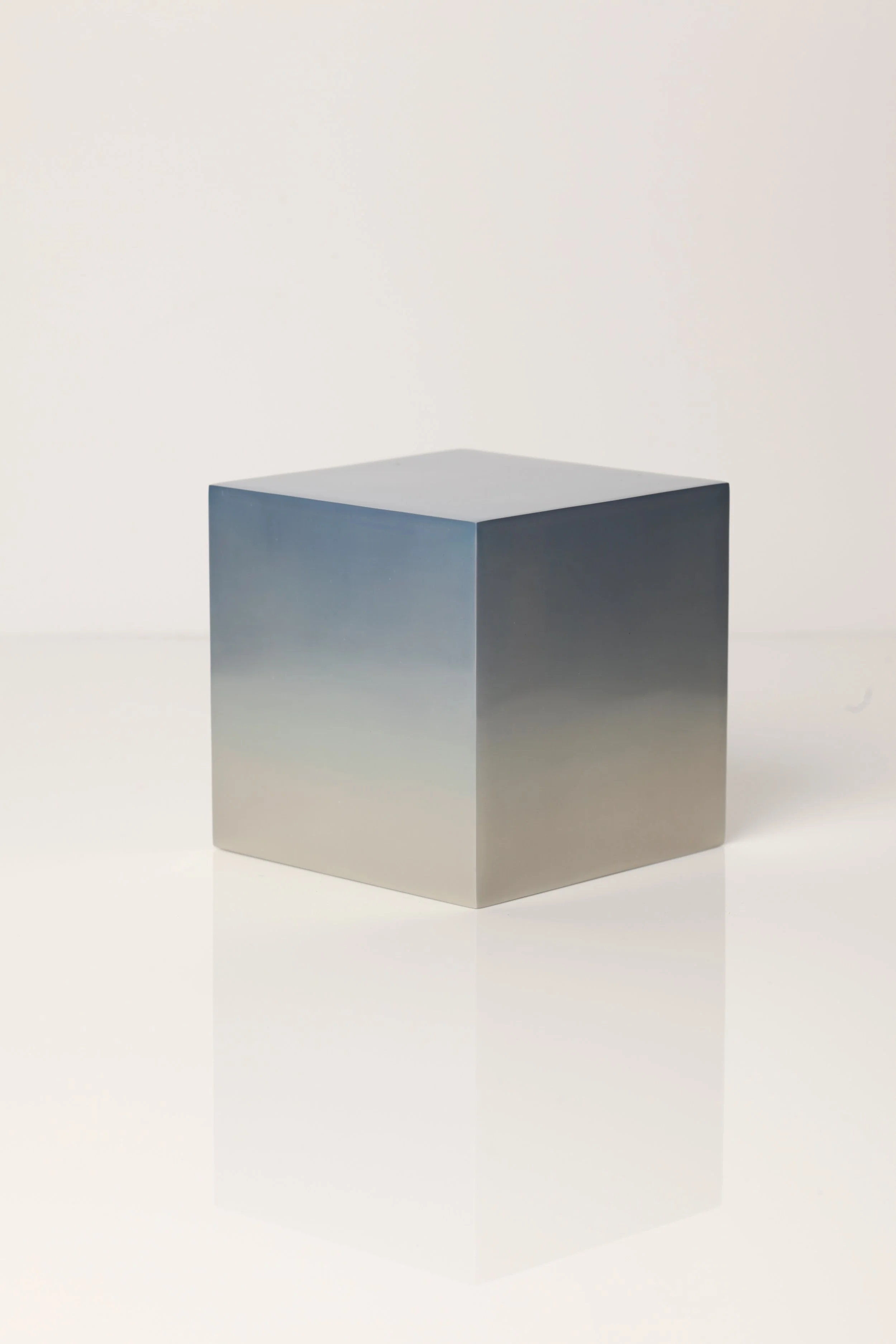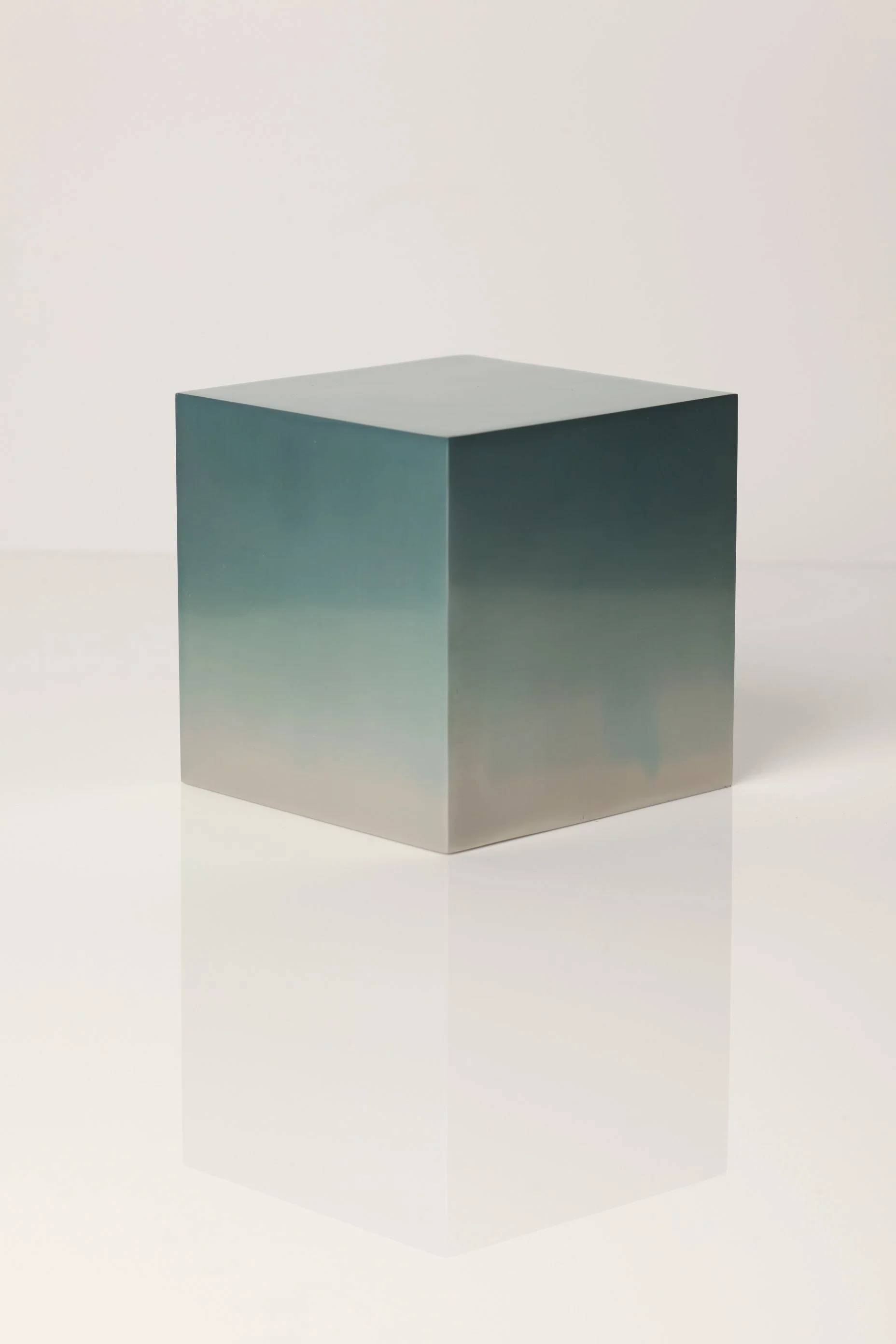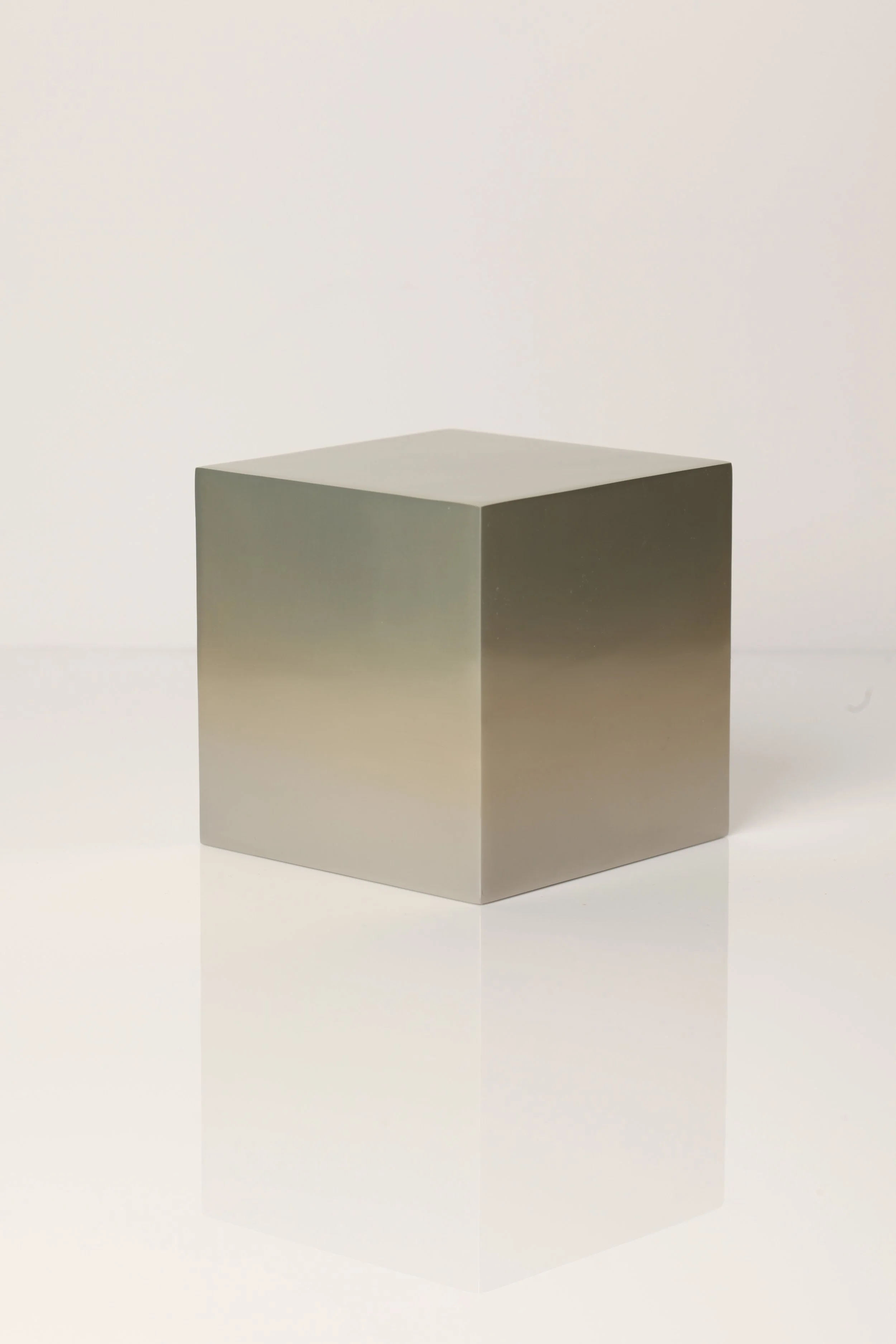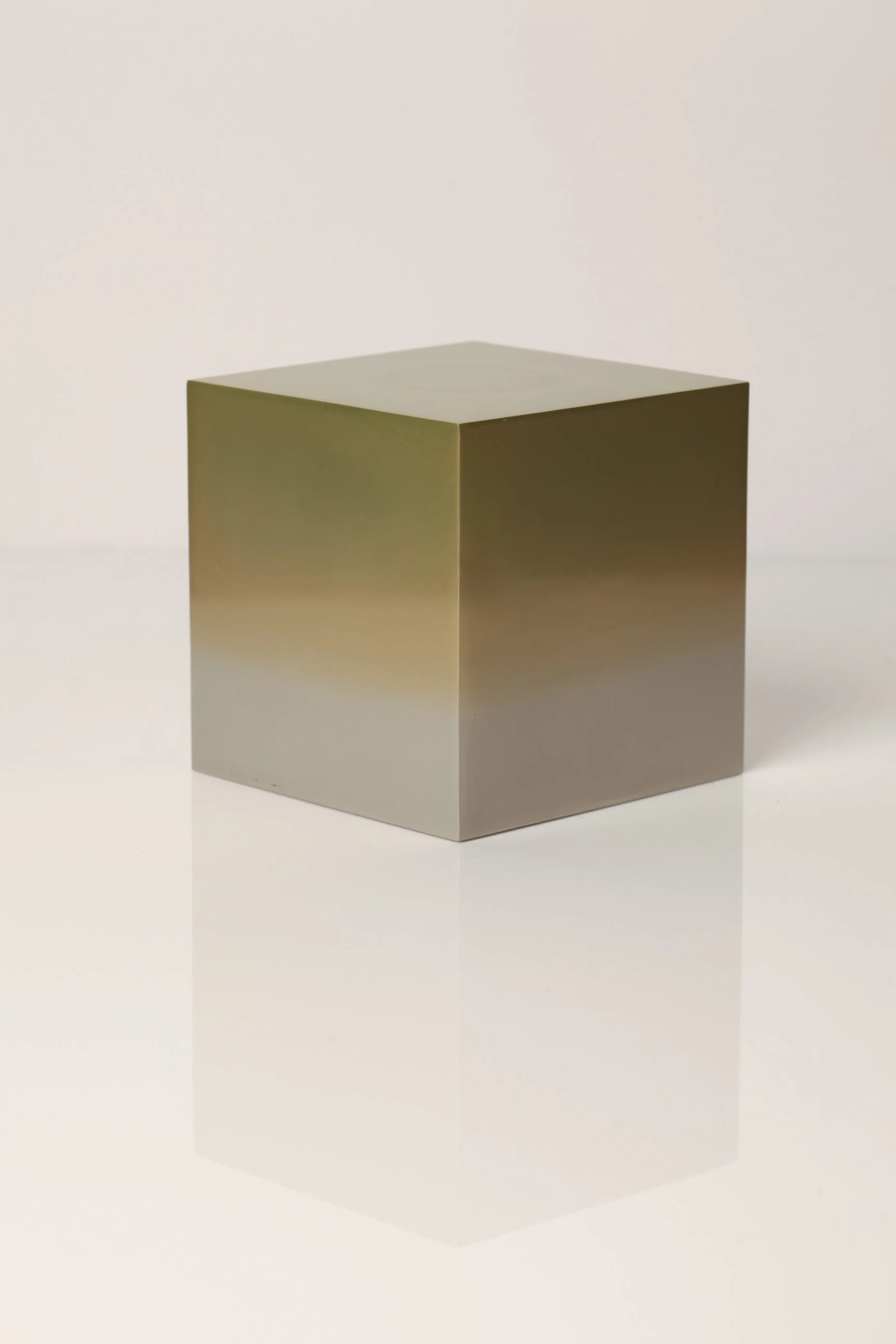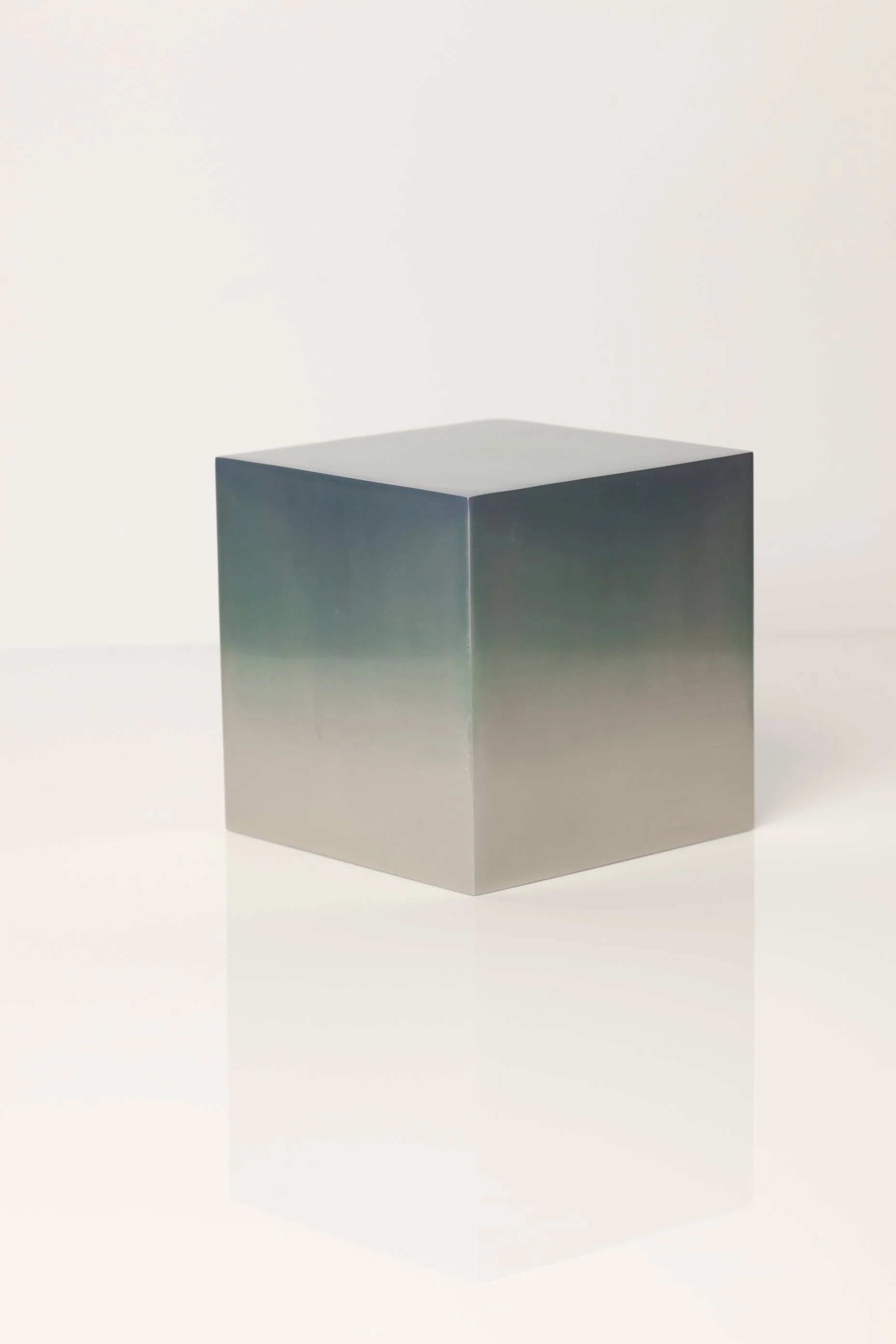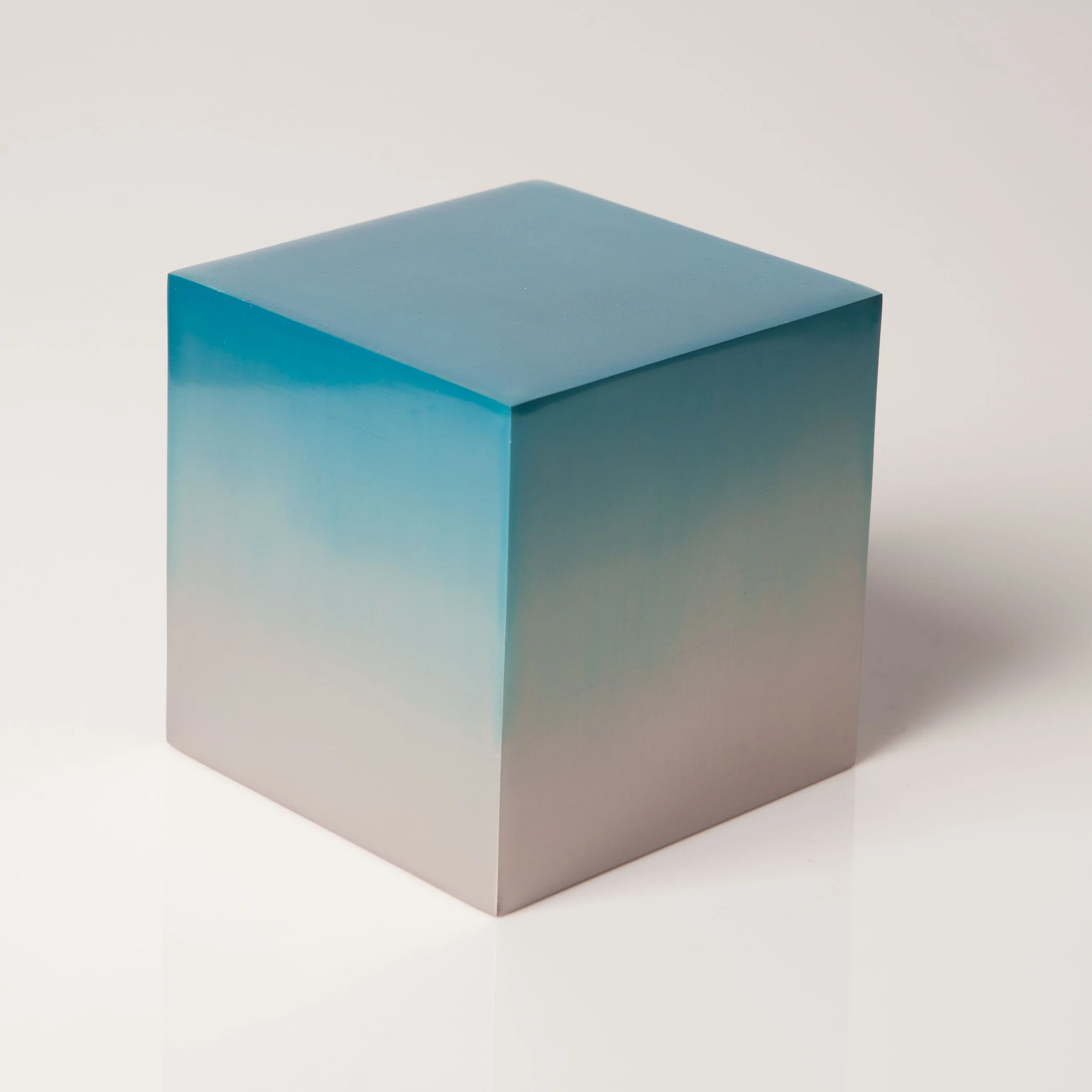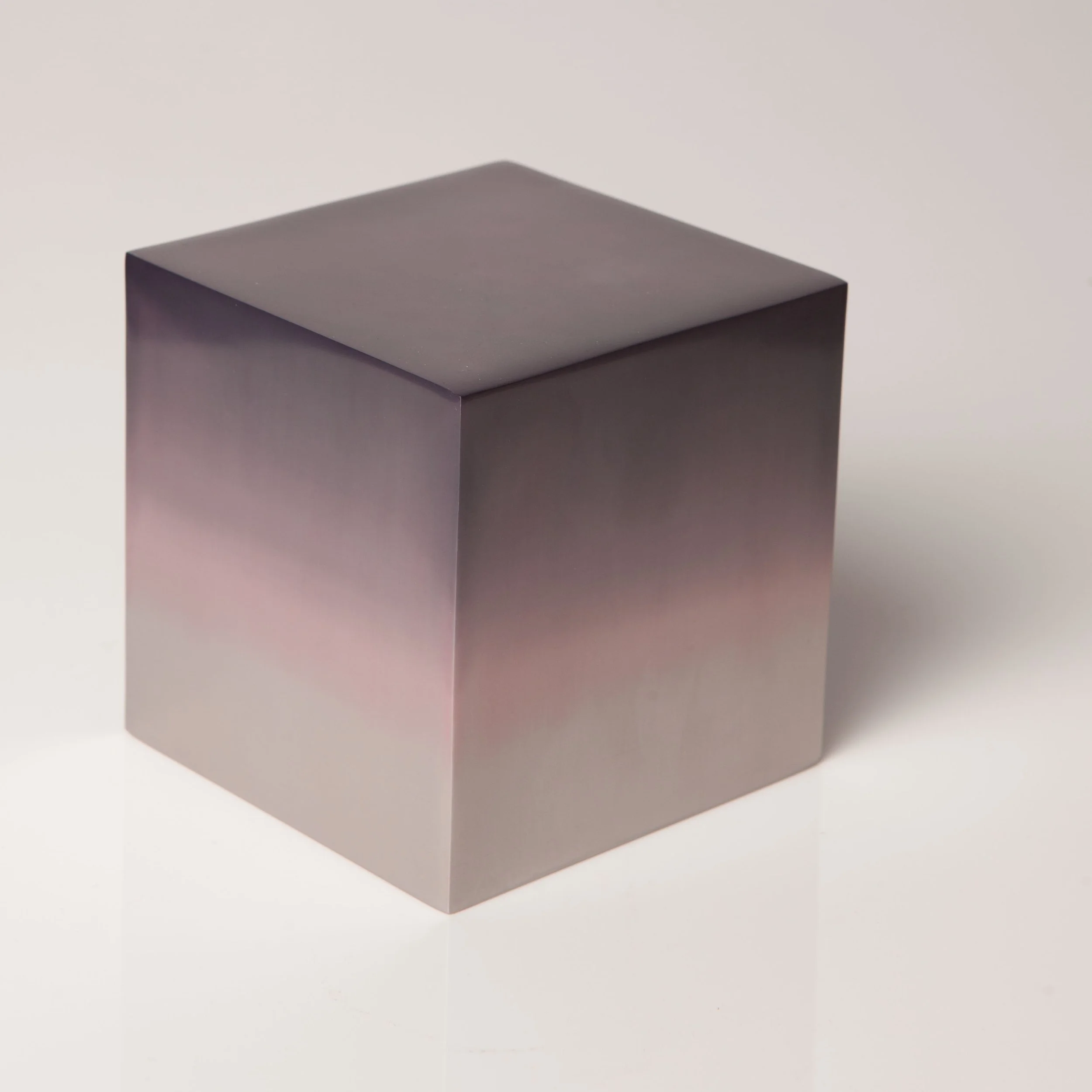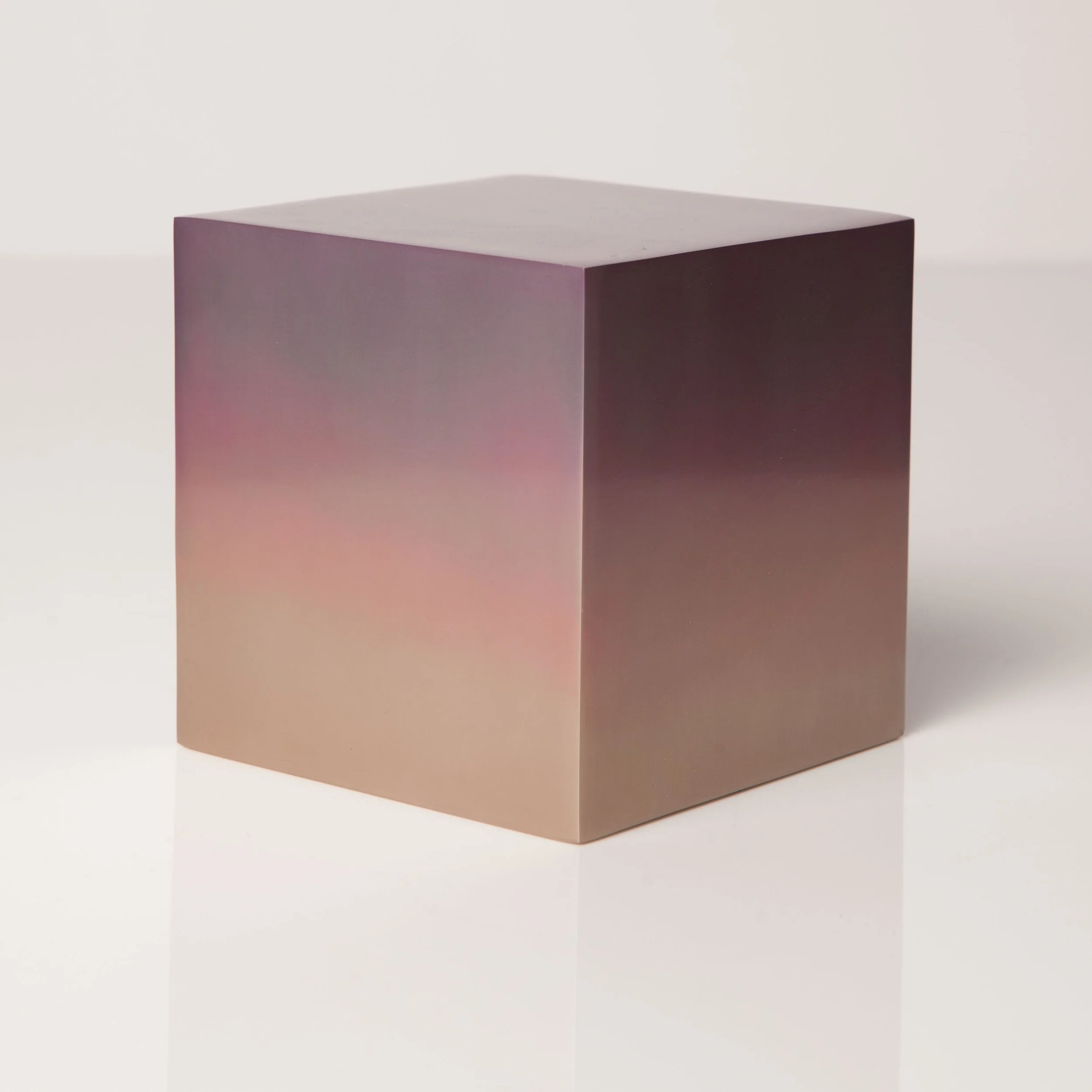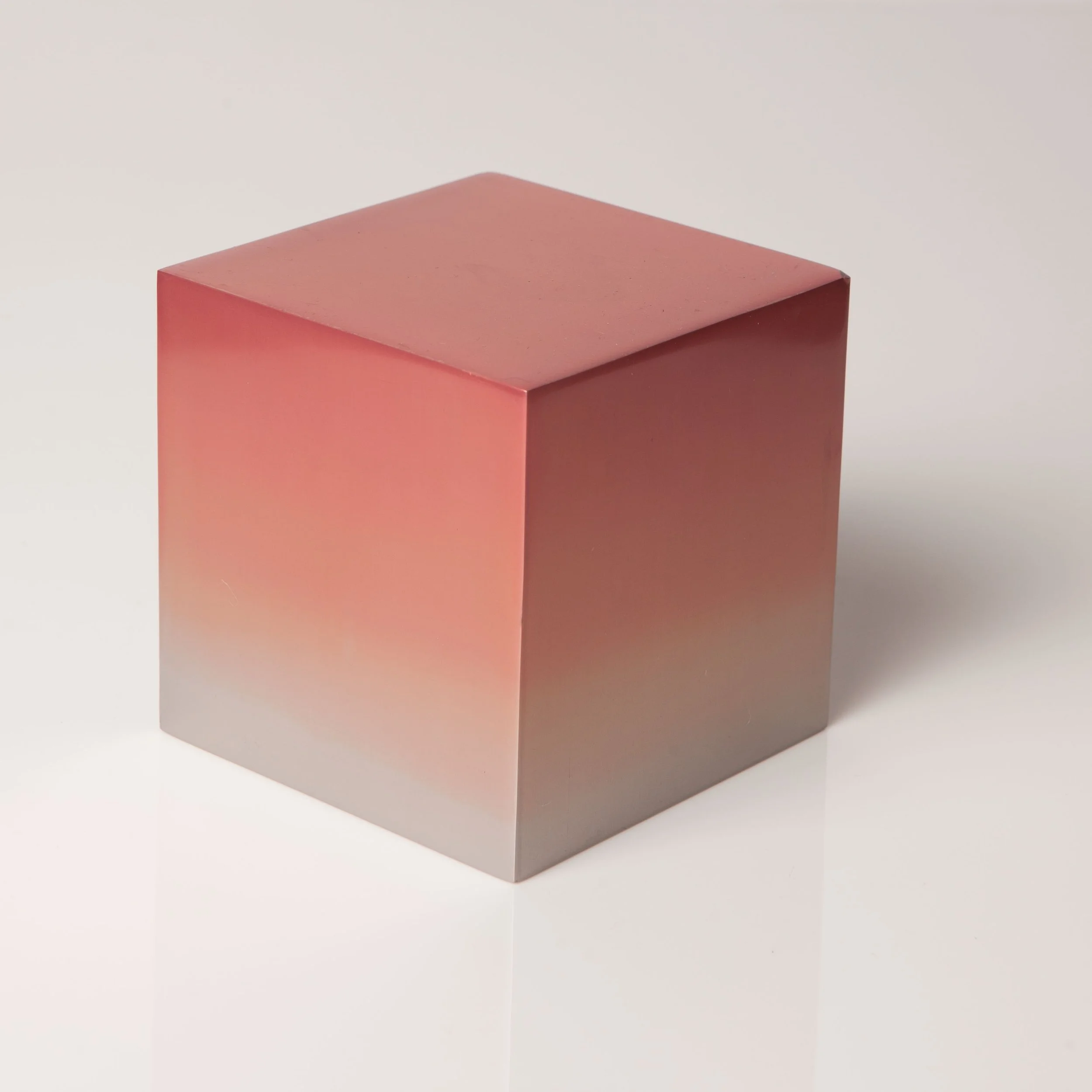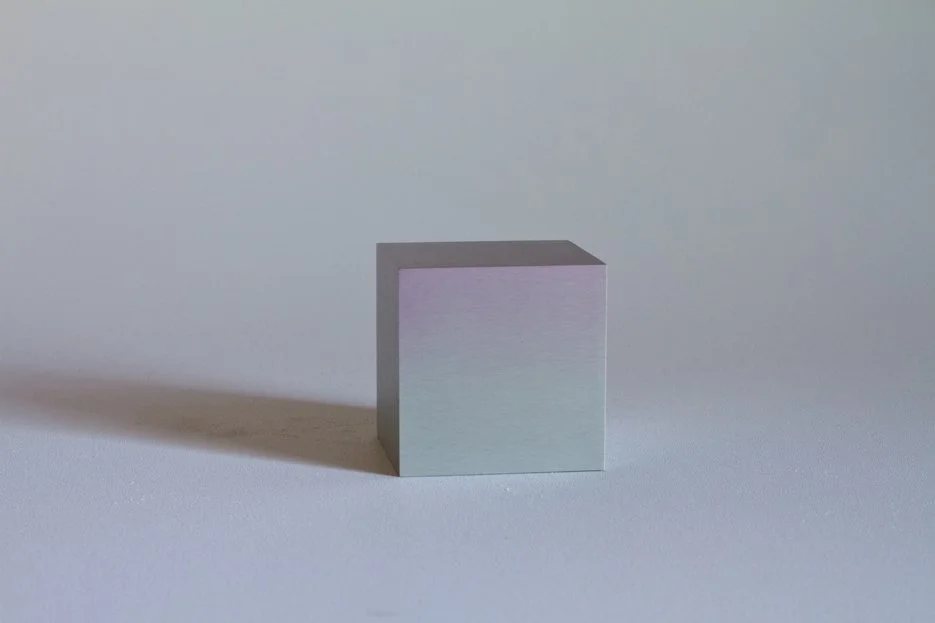Reflection Cubes (2010–2020)
Reflection Cubes are solid blocks of anodized aluminum, each measuring approximately 4 to 5 inches across. They appear as chromatic monoliths: planes of color that shift subtly like a watercolor wash. Yet they are made from one of the most technologically advanced and enduring surfaces ever engineered. In 2010, I pioneered a proprietary method of hand-dyeing anodized aluminum to create a soft, watercolor-like effect on a surface that resists wear almost absolutely.
Anodizing is an electrochemical process that transforms the surface of aluminum into aluminum oxide (Al₂O₃), a crystalline structure identical to corundum, or sapphire. With a Mohs hardness rating of 9, just below diamond, this coating is valued in aerospace engineering, including by NASA, for its ability to withstand extreme thermal fluctuations and microabrasions in space. Although extremely hard, the anodized surface remains microscopically porous before sealing. By carefully working dyes into this porous crystalline layer, I developed a way to embed nuanced, flowing color into a sapphire-like shell. The resulting surface is simultaneously painterly and technologically precise, handmade and unyielding.
This innovation, first developed in 2010, later led to a commission from Bang & Olufsen, who formally acknowledged not only the uniqueness of the technique but also my contribution to metallurgical surface transformations. The collaboration, titled Transformations, Bang & Olufsen by Miya Ando, was publicly unveiled in Copenhagen on September 3, 2013. A subsequent press release issued on October 2, 2013 stated: “Miya Ando uses her signature hand-brushed, ‘industrial watercolour’ technique on anodized aluminium while Bang & Olufsen employs groundbreaking, specialized and complex techniques to craft aluminium for the companies’ iconic TV sets, loudspeakers and music systems” (PR Newswire, October 2, 2013).
Reflection Cubes are part of my Hand-Dyed Anodized Works series, a body of work that explored this technique across varying scales and forms. Conceptually, the cubes examine the tension between fragility and permanence. They embody an ephemeral gesture: color dissolving like watercolor on paper. Yet that gesture is fixed within a material engineered to endure. In this way, they evoke mono no aware, the Japanese sensibility of beauty found in impermanence, even as that momentary gesture is preserved within a surface approaching geological permanence.

